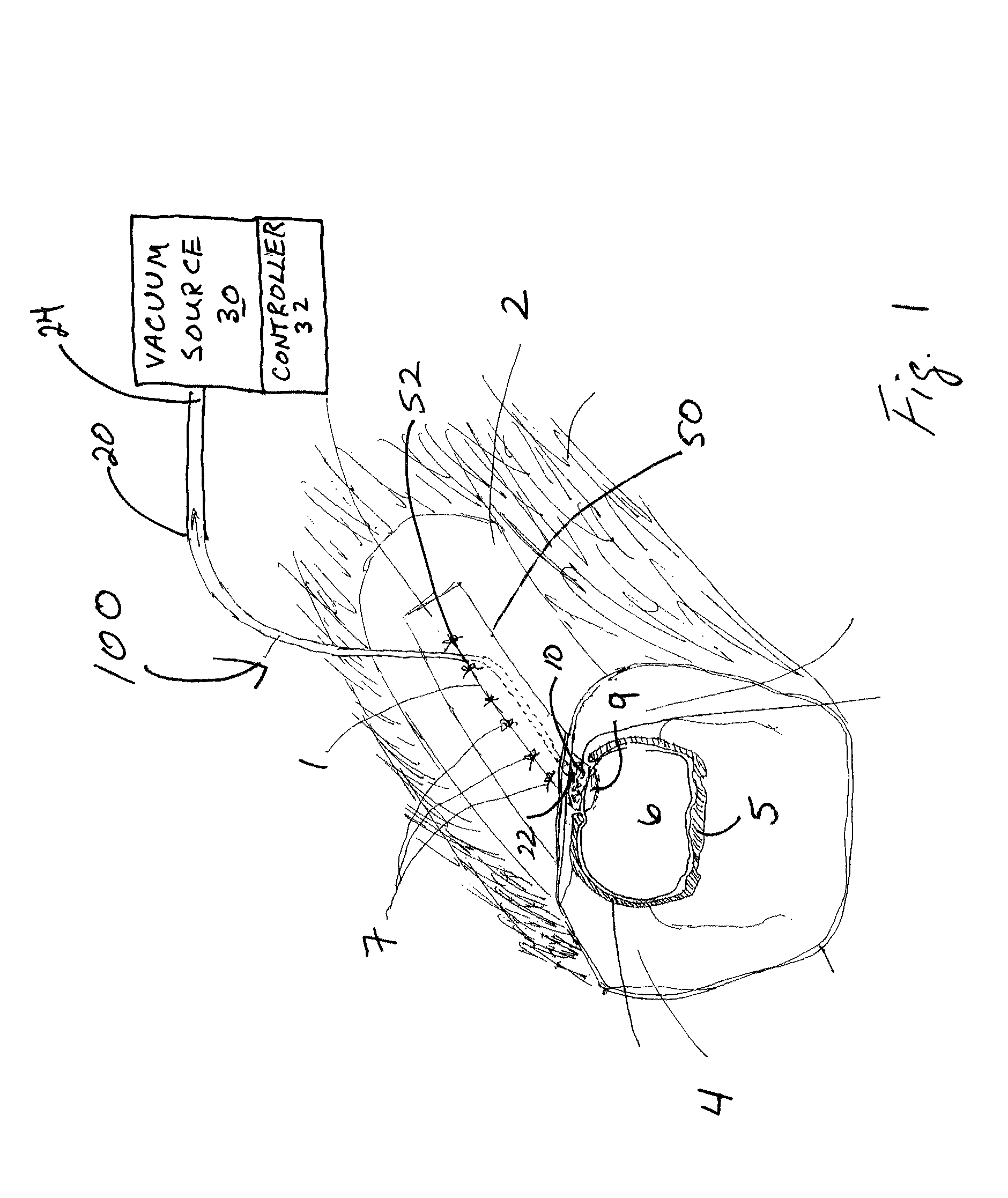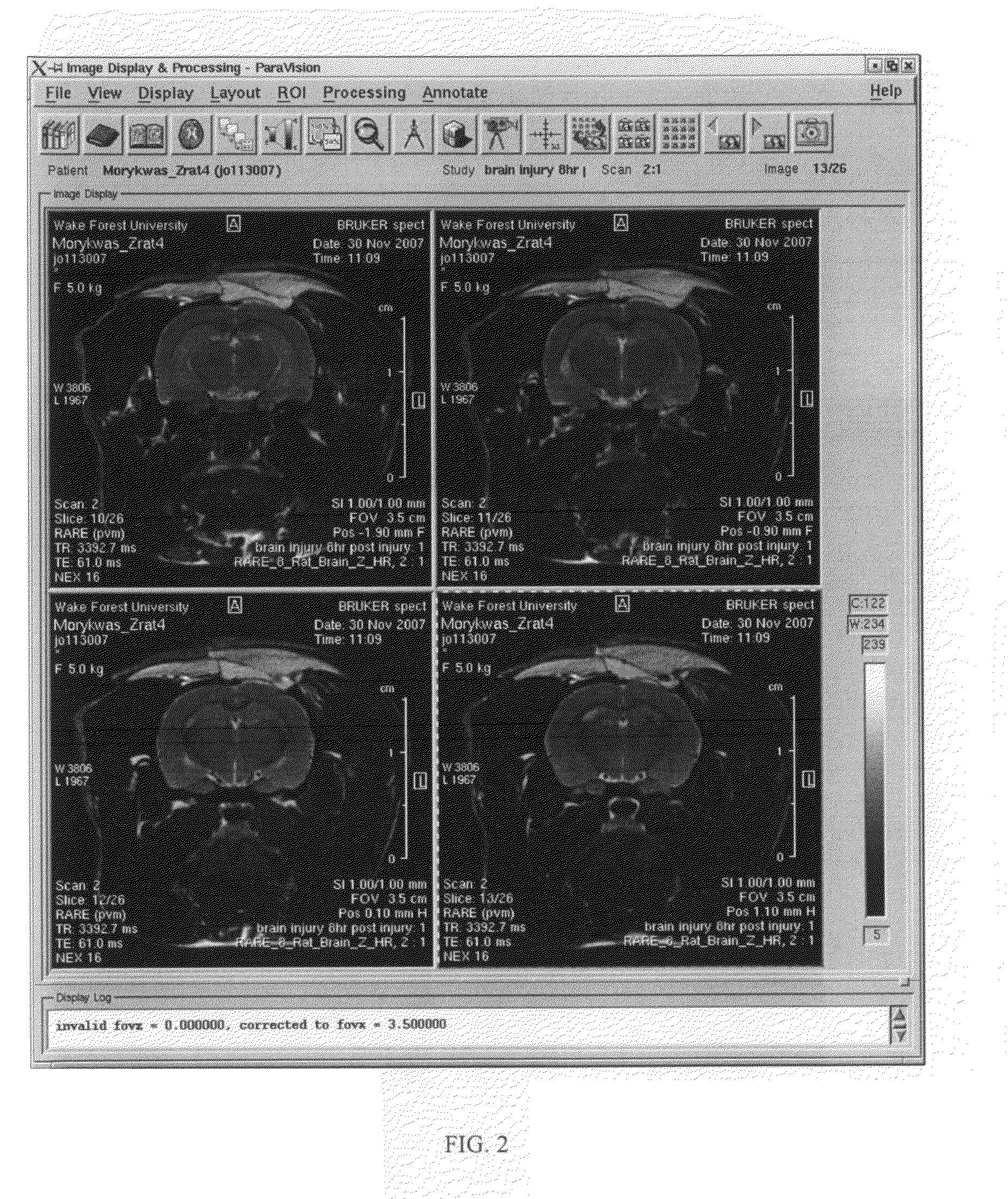Device and method for treating central nervous system pathology
a technology a device, applied in the field of devices and methods for treating tissues of the central nervous system using subatmospheric pressure, can solve the problems of cns parenchyma death, compromise of physiological recovery, complications of drugs, etc., and achieve the effects of reducing the edema of the central nervous system, preserving neurologic function, and increasing the probability of recovery and survival
- Summary
- Abstract
- Description
- Claims
- Application Information
AI Technical Summary
Benefits of technology
Problems solved by technology
Method used
Image
Examples
examples
Rat Brain Injuries and Sub-Atmospheric Pressure Exposure
experiment 1
[0051]An experiment was conducted to develop a model of brain contusion and vacuum treatment of the contused brain. Twelve (12) 300 gram Sprague Dawley rats were procured and allowed to acclimated to the housing conditions. For two of the animals, a MRI scan (Bruker Biospin Horizontal Bore 7 Tesla small animal scanner, Ettlingen, Germany) of the brain was obtained before any other procedures were performed. The animals were sedated with isoflurane (2% inhalation) and the scan of the brain obtained. The animals were allowed to recover from anesthesia and returned to their cages. For creation of the injury, on the day of surgery the animals were sedated with isoflurane (2-2.5% inhalation). The top of the head was shaved and the hair removed with a depilatory agent. A midline incision 1 was made down to the bone 5, FIG. 1. The right side of the skull was removed exposing the right half of the brain; the dura was left intact. The animal was placed into the stereotaxic holder on the impa...
experiment 2
[0069]Cell death following traumatic brain injury is biphasic, with initial death due to the trauma itself, then an ongoing death as sequela to the release of excitatory amino acids, buildup of lactate, etc. The release of excitatory amino acids (glutamate, aspartate) cause a disturbance in ion homeostasis via agonist opened channel, thus increasing energy demand and increasing lactate production. Elevated levels of glutamate have been shown to be correlated with increased levels of lactate. This increase in lactate is reflective of increased energy demand during periods of impaired supply (ischemia), and is inversely related to patient outcome. Lactate production leads to apoptotic neuronal cell death.
[0070]In this preliminary study, anesthetized rats underwent an 8 mm diameter craniectomy between the bregma and lambda, 1 mm lateral to the midline. A controlled cortical impact injury with intact dura was created using the apparatus of Example 1. The impactor tip was 6 mm in diamete...
PUM
| Property | Measurement | Unit |
|---|---|---|
| pressure | aaaaa | aaaaa |
| pressure | aaaaa | aaaaa |
| sub-atmospheric pressure | aaaaa | aaaaa |
Abstract
Description
Claims
Application Information
 Login to View More
Login to View More - R&D
- Intellectual Property
- Life Sciences
- Materials
- Tech Scout
- Unparalleled Data Quality
- Higher Quality Content
- 60% Fewer Hallucinations
Browse by: Latest US Patents, China's latest patents, Technical Efficacy Thesaurus, Application Domain, Technology Topic, Popular Technical Reports.
© 2025 PatSnap. All rights reserved.Legal|Privacy policy|Modern Slavery Act Transparency Statement|Sitemap|About US| Contact US: help@patsnap.com



